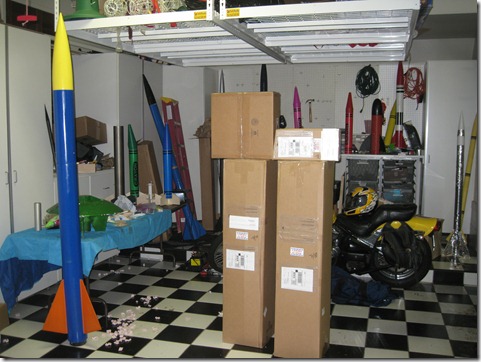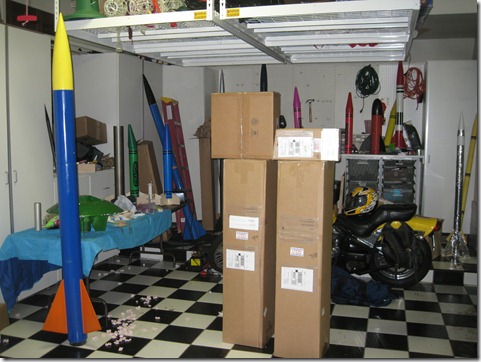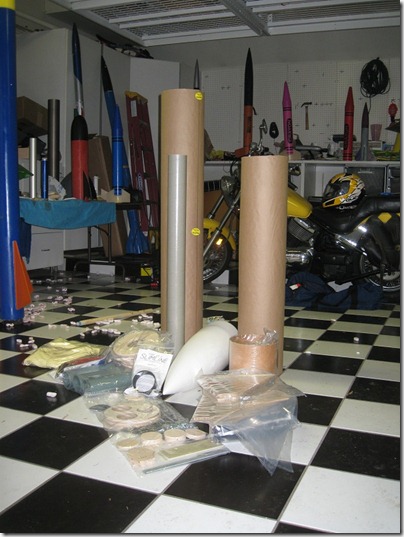Welcome to my Triipoli Rocket Association Level 3 certification Rocket blog! I plan to use this as a way to organize the photo’s and interrogatory around the build.
Obtaining my Level 3 certification will allow me to fly larger projects with larger M and above motors. Level 3 is not to be taken lightly. This is a formal process that must be successfully completed. The entire rocket project must be thoroughly documented. This requires developing schematic documentation for every rocket component that demonstrates construction techniques, adhesives, materials, laminations, electronics, wiring, and detailed checklists. The whole process must then be approved by two members of the Tripoli Technical Advisory Committee (TAP) with at least one TAP member completing a successful final inspection of the entire rocket project. Once all the paper work and approvals are completed, the level 3 rocket can be flown. Only when the rocket is successfully launched, recovered, and all final TAP signatures obtained, is the level 3 process completed.
Why is this a big deal? The short answer: If not done correctly, it could be very dangerous. A level 3 rocketeer can launch rockets using motors that are over FOUR THOUSAND times more powerful than the typical Este’s motor you can buy in a hobby store.
Why on earth would I want to do something like this? The short answer – FUN. This particular hobby combines 8 things that really appeal to me:
1) Computer modeling. Except for the small rockets I build with my kids, every rocket I’ve built will start with a computer simulation. My primary application of choice is called “Rocksim’ which allows me virtually build the rocket with all of the likely materials I’m going to use, and test it’s flight and operational characteristics before ever picking up a hammer.
2) Advanced building techniques. I can run a drill press as well the next guy but when you combine these skills with things like at-home carbon fiber vacuum lamination processes, precision alignment requirements, and advanced epoxy techniques, it starts to really get interesting. In
3) Purpose built computers and custom software. You can’t launch a rocket to 20,000 ft and hope everything works out. I rely on advanced avionics, many home built to control the key stages of a flight and recovery. Altimeters, barrometric sensors, accelerometers, GPS units, telemetery transmitters, HAM transmitters and onboard video systems all add to the ‘fun’ of a successful launch
4) You can be an individual contributor. The sport is small, and still fairly young. This allows one to be a meaningful individual contributor to further the knowledge and capabilities of the hobby. For example, I’ve been working on an electromagnetic ejection system to remove the need to use black powder, and a small explosion within my rocket to release a recovery device. At least once a month I run across some new novel idea from a fellow rocketeer on a better / different way to accomplish something
5) Allows for a lot of creative expression. I’ve built rockets that look like bats, flying saucers, space planes, I’ve even launched a Christmas tree. I get to decide how the rocket is painted, and name it (My level 3 rocket is named “Questionable Investment”)
6) Fellow rocketeers. I’m a geek. I know I am a geek. This sport tends to attract like minded geeks, and quite a few interesting personalities. I was laughing so hard at Tim’s Lehr’s “commentary” about my rockets at MWP 8 that most of the video I shot is unusable because I’m laughing too hard to keep the camera straight. Better, all four of my daughters LOVE rockets too – it’s something we can all do together that doesn’t require me to dress up, or have tea with dolls.
7) This is the only hobby I know where the failures are as interesting to watch as the successes. In fact, like car racing, some come to watch, hoping for the failures.
8) LDRS – That’s the name of Tripoli’s big annual rocket launch. Stands for “Large Dangerous Rocket Ships”. Need I say more?
On to the first photo’s!
These are the boxes containing the Giant Leap Nuclear Sledgehammer which will be the basis of my level 3 rocket. A couple of interesting things to note. First, my wife has actually let me take over an entire bay of our garage to turn into a mad scientist laboratory – if you knew my wife, you would know that this is really proof of her love.
Here are the parts “unboxed”. First, note how organized Giant Leap ships their components. I’ was really impressed. Each piece had a separate heat-sealed bag. Just note – this is the LAST time you will see these components this organized ![]()



Hi Alex!
Nice garage. Why do you have so many half-built crayons in the background? I am in violent agreement with #4. Looking forward to your build thread.
Hi Adrian!
I am building those for my kids. Part of their Christmas presents… I’m a little behind 😉
I’m just curious. Why wouldn’t you do you build thread on one of the rocket forums, like TRF, or Rocketry Planet? It would get a lot more traffic
hi,
The site is primarily for my tap sponsors to view. I didn’t want them wading through lots of comments.
The blog format also let’s me better integrate photos and text.
Finally, I have a lot of engineer friends that are not into rocketry. I’m hoping this will piqué their interest enough to join me at a launch